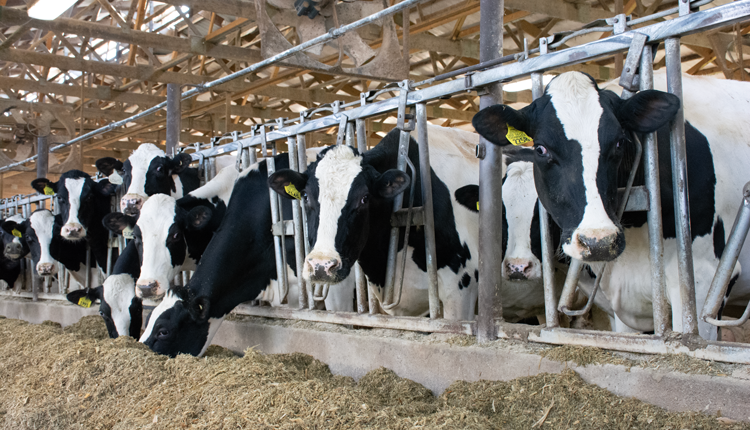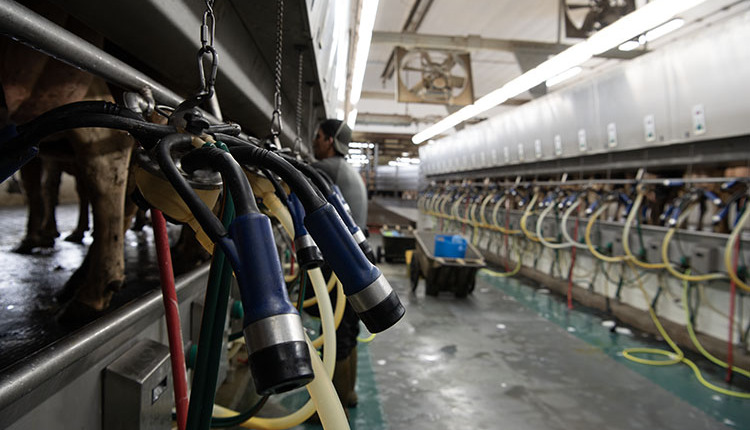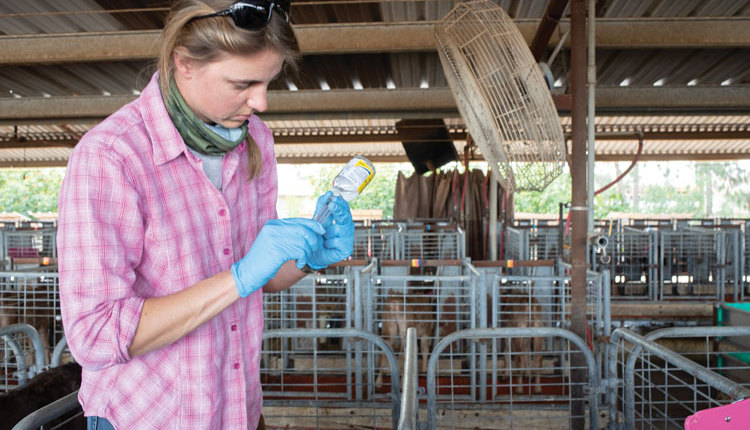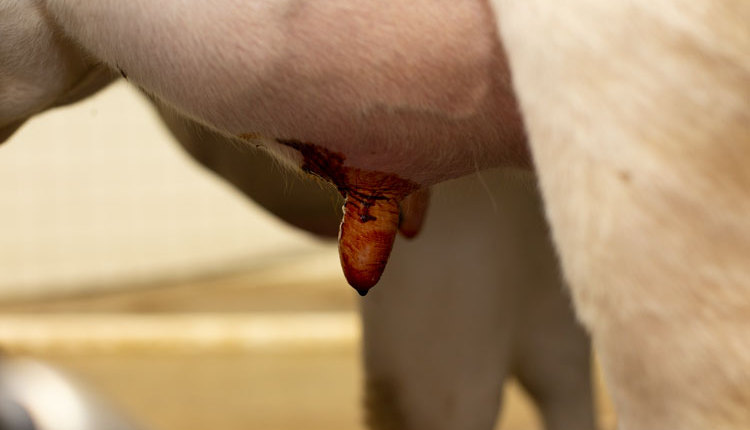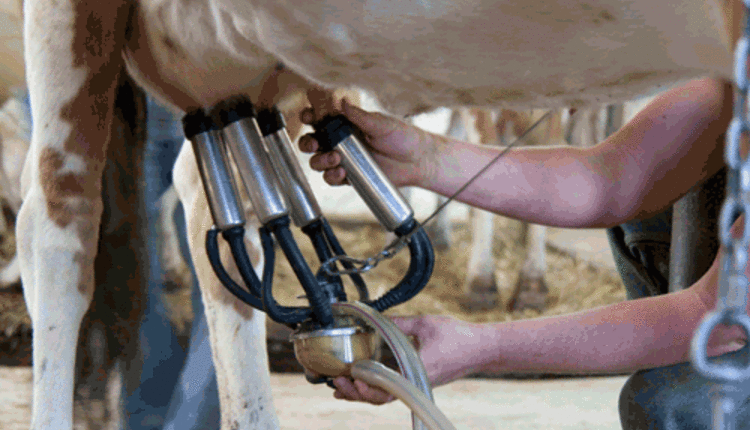The author is a senior partner in the Evansville Veterinary Service, Evansville, Wis.
Amy's bulk tank SCC (BTSCC) varied from 250,000 to 500,000 and occasionally would be over 600,000. With the allowed level being lowered to 400,000, she needs a management plan that prevents those worst months.
Each cow contributes to both the pounds of milk and the number of cells in the bulk tank. While bulk tank SCC (somatic cell count) is a herd measure, each cow is a contributor. The proportion of the tank a cow contributes is dependent on the cell count level and the pounds of milk being produced.
Amy already records individual cow SCC counts on a monthly basis. We will use the individual cow SCC to develop a plan to identify the individual cows to apply "actions" to each month.
Five first targets
There are five areas that we need to manage relative to udder health. Three on the prevention side of the equation include:
Use records before treating
The plan developed for Amy will identify situations in both the clinical and subclinical groups where antibiotic treatment is the appropriate action. But the plan will also use records and diagnostics to identify situations where antibiotic treatment is not the appropriate management action to take.
Clinical mastitis is an exposure that results in abnormal milk. We have written frequently about the strategies for applying antibiotic treatment/no antibiotic treatment protocols based on severity, cause, and likelihood of successful outcome clinical cases.
The objective in this case is to build a similar plan for subclinical cases. If we take a chapter from clinical mastitis, the first step in the standard operating procedure (SOP) for addressing a case is detection of the case. Then we examine the information to make an antibiotic treatment/nontreatment decision, assess progress of the case relative to our expectations which are based on the examination, and plan how to return her to the productive herd.
In the subclinical plan, detection occurs as a batch when we first see the monthly SCC counts. We then screen cows into two groups, those needing additional diagnostic information in order to make a medically informed chemical treatment or cows requiring a management adjustment. There are a limited number of management actions that we take to address subclinical cows. We can market them earlier than planned, remove them from the breeding pool (making this their last lactation), segregate them from low cell count cows, or treat the subclinical infection.
Obviously, selling and treating require the most information in order to make an accurate choice. For easier screening, and because these categories change each month as individual cows are infected or spontaneously cure, we will divide the cows into clear categories. The categories give us insight into the effectiveness of the prevention steps on the herd while keeping the individual animals categorized for ease of screening cows for actions.
The population changes
Amy has the SCC information; the next step in accomplishing her goal is to put steady management pressure on the subclinical populations the SCC information identifies. The categories most significant to us are:
Click here to return to the Milk Quality E-Sources 120325_250
Amy's bulk tank SCC (BTSCC) varied from 250,000 to 500,000 and occasionally would be over 600,000. With the allowed level being lowered to 400,000, she needs a management plan that prevents those worst months.
Each cow contributes to both the pounds of milk and the number of cells in the bulk tank. While bulk tank SCC (somatic cell count) is a herd measure, each cow is a contributor. The proportion of the tank a cow contributes is dependent on the cell count level and the pounds of milk being produced.
Amy already records individual cow SCC counts on a monthly basis. We will use the individual cow SCC to develop a plan to identify the individual cows to apply "actions" to each month.
Five first targets
There are five areas that we need to manage relative to udder health. Three on the prevention side of the equation include:
- Assure a milking preparation technique that stimulates good flow of milk and the removal of the bacteria from the skin and teat end before applying the milking machine.
- Plan the maintenance and the machine settings that are conducive to removing that flow of milk in a gentle yet efficient manner.
- Provide an environment that minimizes the number of pathogens on the skin and teat end when she goes for milking or is waiting when she lays down.
Use records before treating
The plan developed for Amy will identify situations in both the clinical and subclinical groups where antibiotic treatment is the appropriate action. But the plan will also use records and diagnostics to identify situations where antibiotic treatment is not the appropriate management action to take.
Clinical mastitis is an exposure that results in abnormal milk. We have written frequently about the strategies for applying antibiotic treatment/no antibiotic treatment protocols based on severity, cause, and likelihood of successful outcome clinical cases.
The objective in this case is to build a similar plan for subclinical cases. If we take a chapter from clinical mastitis, the first step in the standard operating procedure (SOP) for addressing a case is detection of the case. Then we examine the information to make an antibiotic treatment/nontreatment decision, assess progress of the case relative to our expectations which are based on the examination, and plan how to return her to the productive herd.
In the subclinical plan, detection occurs as a batch when we first see the monthly SCC counts. We then screen cows into two groups, those needing additional diagnostic information in order to make a medically informed chemical treatment or cows requiring a management adjustment. There are a limited number of management actions that we take to address subclinical cows. We can market them earlier than planned, remove them from the breeding pool (making this their last lactation), segregate them from low cell count cows, or treat the subclinical infection.
Obviously, selling and treating require the most information in order to make an accurate choice. For easier screening, and because these categories change each month as individual cows are infected or spontaneously cure, we will divide the cows into clear categories. The categories give us insight into the effectiveness of the prevention steps on the herd while keeping the individual animals categorized for ease of screening cows for actions.
The population changes
Amy has the SCC information; the next step in accomplishing her goal is to put steady management pressure on the subclinical populations the SCC information identifies. The categories most significant to us are:
- First-calf heifers that have a high first test SCC.
- Adult cows that went dry without a subclinical infection and had a high first test.
- Adult cows that failed to cure during the dry period.
- Young chronic cows.
- Older chronic cows.
- Lactating cows that were treated for a clinical infection and are subclinical posttreatment.
